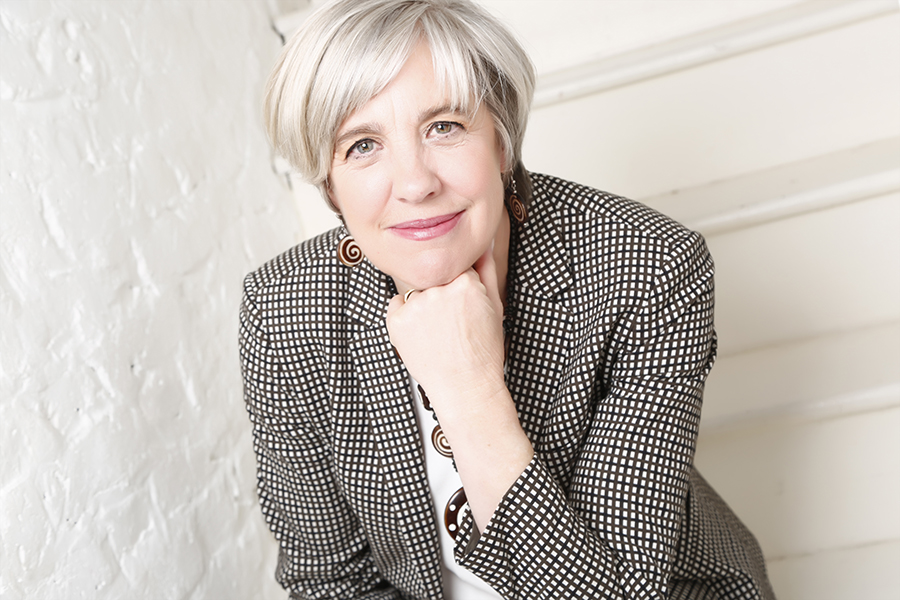It’s no longer, “How much can I get for how little I give?” It’s now, “How much can we give for all we get?” The next century must be the ecological century. We should begin by asking design questions that inspire our creativity and generate tremendous value.
In 2018, I established Reboot the Future, a small foundation with a big ambition. The foundation is helping to build a generation of people who refuse to believe the future is foreclosed, a generation that believes we can re-orientate our choices, our institutions, and our systems in the service of reciprocity, care, and hope — all inspired by a rule as ancient as humanity itself: Treat others and the planet as you would wish to be treated.
Part of how we do this is by curating and sharing alternative roadmaps for a better future, a process that began with my publication of Imaginal Cells: Visions of Transformation, which showcases thinking from some of the world’s leading visionaries. We start the ongoing serialization of that book with this piece by Bill McDonough, who has been one of the leading figures designing and defining the circular economy for the past 30 years. — Kim Polman
The Same Answers to The Same Questions Must Change
Things are not working. While 795 million people go hungry, one-third of our food gets wasted. This waste accounts for $940 billion in annual economic losses, requiring one-quarter of all the water used by agriculture, cropland the size of China, and generating roughly 8 percent of global greenhouse emissions. Much of the food itself comes wrapped or boxed in plastic, which leaks into the ocean at the rate of 8 million tons a year — joining the 150 million tons already floating off our shores.
At current rates, the amount of all ocean-borne plastic will likely outweigh all the fish in the sea by the year 2050. This tide of waste drains our economies too. Nearly 95 percent of the material value of all that plastic packaging, roughly $120 billion annually, is lost after its first (and only) use.
This can’t continue. While billions enjoy the many benefits of sustained economic growth, the industrial system upon which we depend has disrupted and polluted the Earth. In dealing with this chaos today, we must do more than limit the negative impacts of industry and circulating toxic materials. We must move to a healthy, productive system where growth is valued, and there is no such thing as waste. Instead, why not strive to have a positive, beneficial impact on the planet with a virtuous economy, rather than being “less bad” within a destructive system?
Good design allows us to do that by following the laws of nature. Rather than limit growth, we can grow in ways that replenish, restore, and nourish the world. There are many things we all want to grow: Education, health, opportunity, more clean water, fresh air, healthy food, and shared prosperity. Whatever positive aspiration we want to pursue, design gives us the capacity to cultivate good, regenerative growth.
The circular economy doesn’t just minimize waste; it eliminates the very concept of waste and establishes cycles of endless resourcefulness. The economic benefits are substantial. A 2013 study by McKinsey & Company estimated that a transition to the circular economy in the European Union would provide $1 trillion in annual savings by 2025 and create 100,000 jobs within five years.
The next century must be the ecological century. We should begin by asking design questions that inspire our creativity and generate tremendous value. How can this project make a positive difference in the life of the local community? How might it create habitat, nourish the landscape, and restore biodiversity? How much shared prosperity can we grow? This is how we wage peace through commerce.
Change is already underway. While it’s true that early adopters carry unique burdens, as is the case with any significant transformation, an emerging circular economy is starting to happen. This new economy is dependent upon a well-organized collaboration that extends throughout supply chains and across national borders. It realizes the opportunities to be found in cooperation at a depth and scale rarely seen in world affairs. If we look hard enough, we can see many inspiring models for the new industry of the 21st century that demonstrate community and company prosperity are intimately entwined. We all benefit when we support each other — future generations and the natural world.
To do so, we need to return to our original design values humbly. As we consider them through the lens of compassion, we see that the Golden Rule is not just for now, and it’s not just for us. It’s not just for some children and not just for some species, either. It’s a call to intergenerational compassion, an idea which might suggest “do unto your children as they would have you do unto them.” This idea is implicit in my book Cradle to Cradle: Remaking the Way We Make Things: “How do we love all the children of all of the species for all time?”
As a designer, I believe this is the question of our time, one which will require cycles of endless compassion and creativity, as well as cycles of infinite resourcefulness. By cultivating abundance, generosity, and hope, rather than fear, limits, and greed, we will wage peace with commerce. This will reframe the fundamental question: “How much can I get for how little I give?” to “How much can we give for all we get?”n
William McDonough is a globally recognized designer, thought leader, sustainable growth pioneer, and a member of the board of directors of the Julie Ann Wrigley Global Institute of Sustainability at Arizona State University. RebootTheFuture.org



































